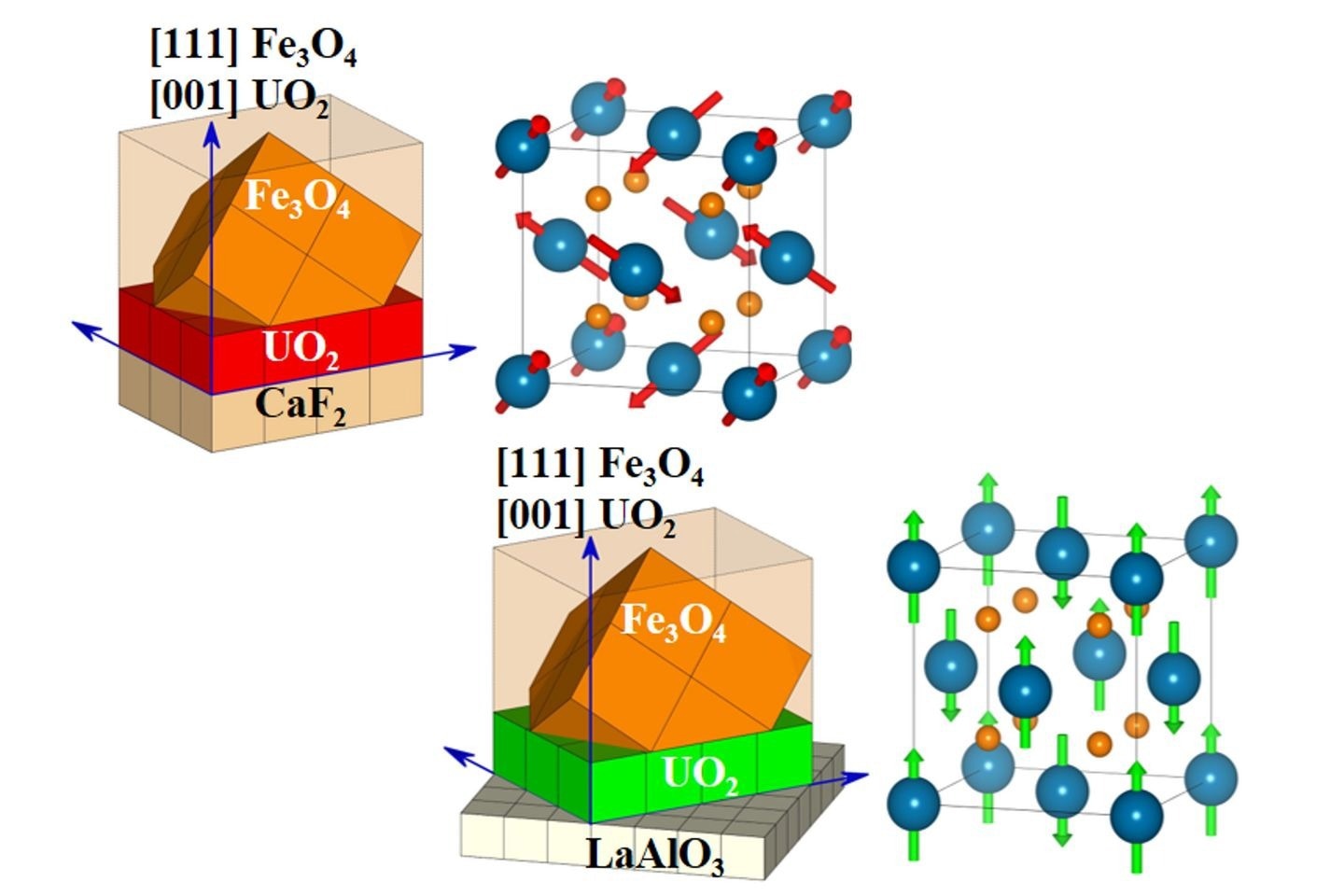Feb 21 2024Reviewed by Lexie Corner
The movement of electrical charges is the foundation of all the technologies. Current flows, electrons travel, and electrical voltage is applied to send signals. However, the inherent magnetic moment of the electron, which is one of the spin's features, can also be used to control electrical currents and messages.
 The material is switched to another structure by applying surface strain imposed by the substrate layer. Image Credit: Vienna University of Technology
The material is switched to another structure by applying surface strain imposed by the substrate layer. Image Credit: Vienna University of Technology
This area of study, known as “spintronics,” is becoming increasingly significant in today's electronic science.
A multinational research team from TU Wien and the Czech Academy of Sciences has recently made a significant advancement: they have used surface strain to flip the spins in an antiferromagnetic material. This might open up important new directions for electronic technology research.
Ferromagnetism and Antiferromagnetism
There are different types of magnetism, and the best known is ferromagnetism. It occurs when the atomic spins in a material are all aligned in parallel. But there is also the opposite, antiferromagnetism. In an antiferromagnetic material, neighboring atoms always have opposite spins.
Sergii Khmelevskyi, Scientific Cluster Research Center, Vienna University of Technology
As a result, their effects cancel each other out, and no external magnetic force is discernible.
In 2010, however, scientists at the TU Wien and the Czech Academy of Science came up with the idea that such antiferromagnetic materials have promising properties for spintronic applications.
Sergii Khmelevskyi, Scientific Cluster Research Center, Vienna University of Technology
This was the start of the new research field of “antiferromagnetic spintronics,” which has developed quickly ever since.
Recently, TU Wien, the Institute of Physics of the Czech Academy of Sciences, and Ecole Polytechnique (Paris) completed intensive work. The main obstacle was that antiferromagnetic materials' spins are hard to work with, yet it is critical to figure out how to do so precisely and consistently.
Computer memory cells, such as MRAM, can only be produced if magnetic states can be altered from one to another in a targeted manner.
Magnetic Frustration: Tiny Effects Make All the Difference
It is simple to manipulate ferromagnets: all that is needed to change their internal magnetic characteristics is the application of an external magnetic field. Antiferromagnets cannot accomplish this, but there is a workaround surface strain.
This calls for a very particular kind of crystal—multiple antiferromagnetic spin configurations may be feasible, depending on the crystal's structure and atom placement. The crystal assumes the lowest energy state. However, it might be a scenario in which the energy of multiple distinct spin orders is equal. It is known as “magnetic frustration."
Sergii Khmelevskyi said, “In that case, tiny interactions, which would otherwise play no role, can decide which magnetic state the crystal assumes.”
Switching by Using Surface Strain
As demonstrated by uranium dioxide experiments, mechanical stress can be applied to compress the crystal lattice, which is sufficient to change the material's magnetic order.
We have now shown that antiferromagnets can actually be switched by utilizing the properties of the magnetic frustration existing in many known materials, and that opens the door to many exciting further developments in the direction of functional antiferromagnetic spintronics.
Sergii Khmelevskyi, Scientific Cluster Research Center, Vienna University of Technology
Source: https://www.tuwien.at/en/